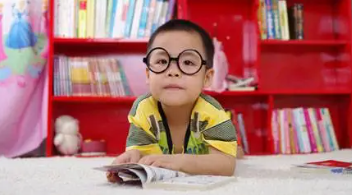As we witness a global surge in myopia cases, there's a growing concern about its long-term consequences.
Myopia, commonly known as nearsightedness, is no longer a mere inconvenience but a significant risk factor for severe eye diseases later in life.
It's time to take proactive steps to safeguard your child's vision.
Myopia's Long-Term Risks:
While myopia may begin as a minor inconvenience, its long-term effects are far more consequential. Myopic individuals risk developing sight-threatening ocular pathologies as they age, significantly increasing their likelihood of vision loss.
1, Myopic Maculopathy
One of the most concerning myopia-related conditions is myopic maculopathy. This condition affects the macula, the central part of the retina responsible for sharp and detailed vision.
In individuals with myopic maculopathy, progressive damage to this critical area can lead to irreversible vision impairment, making activities like reading and recognizing faces challenging.
2. Glaucoma
Additionally, myopia is closely associated with an increased risk of glaucoma. Glaucoma is a group of eye conditions characterized by elevated intraocular pressure, which can cause damage to the optic nerve. Myopic individuals are more susceptible to glaucoma, which can ultimately lead to blindness if left untreated.
3. Retinal Detachment
Retinal detachment is another alarming risk linked to myopia. In myopic eyes, the elongated shape of the eyeball can increase tension on the retina, making it more susceptible to detaching from the underlying tissue.
Retinal detachment is a medical emergency that requires immediate attention, as it can result in permanent vision loss if not promptly treated.
Protecting Your Child's Vision
Taking proactive measures to manage myopia is crucial to lower the risk of developing these sight-threatening conditions.
Regular eye exams, especially for children, can detect myopia early, enabling timely intervention.
Additionally, myopia management strategies, such as orthokeratology (ortho-k), specialized muti-focal contact lenses, and lifestyle modifications, can slow the progression of myopia, including;
- Spending 1-2 hours outdoors each day and
- Reducing screen time
As a parent, being aware of the long-term risks associated with myopia is essential for safeguarding your child's vision. By taking these proactive steps and staying informed about the potential consequences of myopia, you can help ensure a lifetime of clear and healthy vision.

